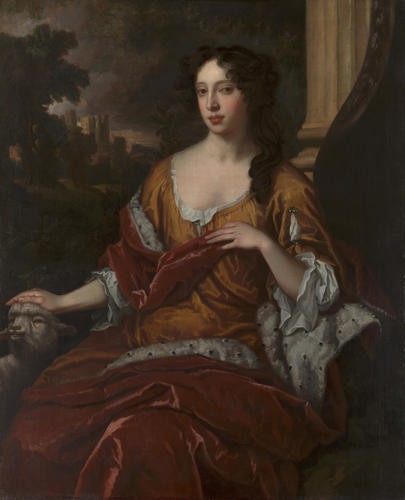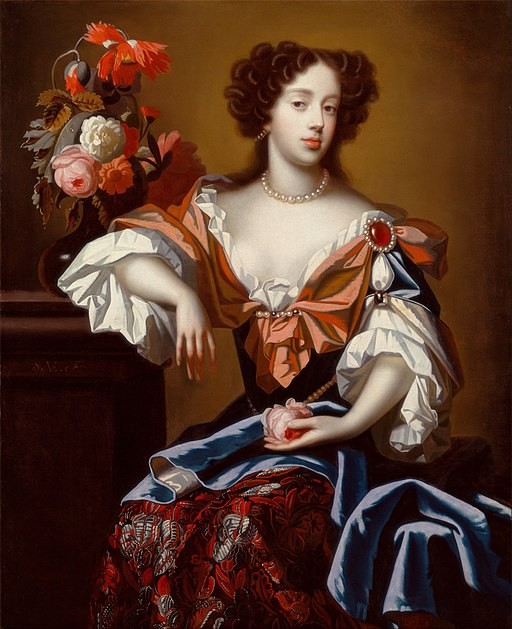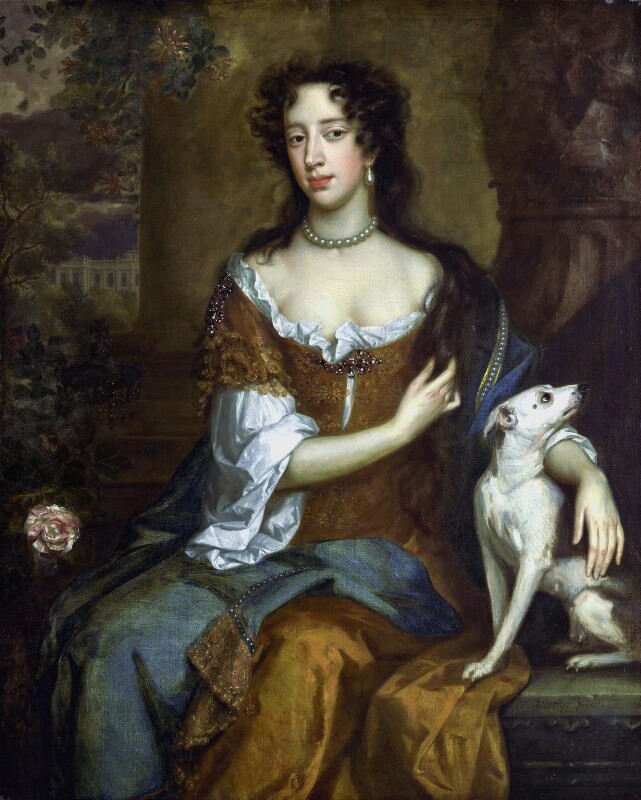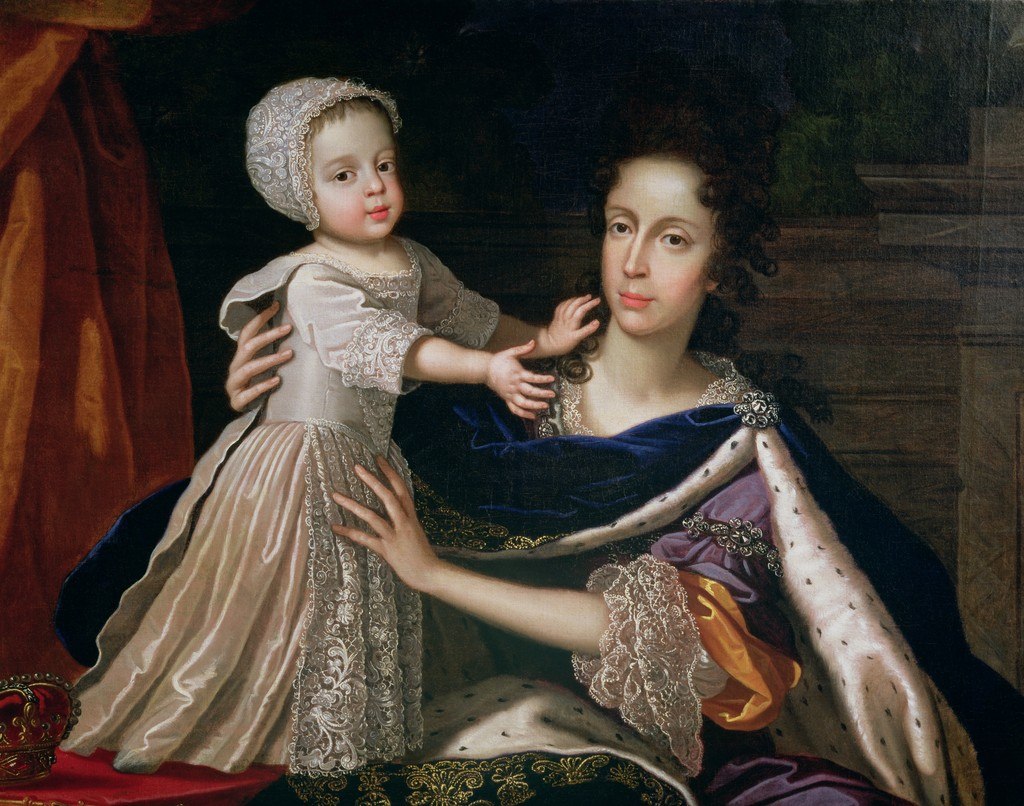30th September 2022
On this day in 1673, the 14 year old Italian heiress Mary Beatrice d’Este was married to James, Duke of York — younger brother to King Charles II of England.
The marriage wasn’t the first choice for anyone involved. Mary’s father, Alfonso IV, Duke of Modena, had died when she was a child and her mother Duchess Laura had wanted Mary to marry the young Charles II of Spain. The older bridegroom,39 year-old James, had heard that Mary was ugly and wanted to take her vows and become a nun, and felt he could aim higher than Mary for his second wife.

But Modena had connections to King Louis XIV of France, who endorsed the match, and King Charles II sent the Earl of Peterborough to look at Mary, finding a beautiful girl. Duchess Laura began to see the appeal of James. Charles II had no legitimate children after almost twelve years of marriage. It was very possible that James would one day be king. The Pope himself told Mary of Modena that it was God’s will that she marry James and bring the Protestant English back to the true faith.
And so, Mary and James were married in Modena on 30 September 1673, with the Earl of Peterborough standing in as James’ proxy.
On her way to England to meet her new husband, Mary stopped in Paris where she was greeted warmly by Louis XIV. This was just as well as her arrival in England was icy. The predominantly Protestant country viewed this Catholic marriage as a Papist plot, and there were demands that the marriage remain unconsummated so that it could be easily annulled. There was no public welcome for fear of anti-papist riots. Charles II had to close Parliament to stop the endless complaints. There were calls for James to leave court, or for Charles to divorce his wife and remarry in the hopes of producing a legitimate Protestant heir.
James, 25 years older than his bride, scarred with smallpox, with two teenage daughters, was delighted with his young bride and soon, she became fond of her husband despite his many mistresses. Mary became pregnant quickly and often, but suffered several miscarriages and lost babies in infancy.

When Mary was 26, James inherited the throne but struggled to keep it. Mary was crowned as queen consort in a lavish coronation — she wore three crowns — but the new royal family were hated by the people, who were fearful that they would reverse the reformation, turning the whole country to Catholicism again.
It was a surprise to everyone when Queen Mary gave birth to a son — James Francis Edward Stuart — and the Protestant enemies spread rumours that the pregnancy was a fake, and the child was a changeling, smuggled into the birthing room in a warming pan. After nation-wide riots, the lords invited James’s oldest daughter Mary and her husband William of Orange to the throne. James gave up without a shot being fired, sent Mary and the baby overseas and then ran away himself. They went into exile in France — the last Catholic monarchs of England, launching a number of unsuccessful attempts to return.

I write about this fascinating and little-known time in my next novel, Dawnlands. I didn’t expect to love Mary so dearly but she is one of our least known most charming queens. She spent much of her life in fear and real danger which she faced with constant courage. She loved the arts, adventure, and horse-riding - what’s not to like? She was determined to be an excellent queen of England - it was not her fault she was a far better royal than her husband!
Dawnlands will be out on 8 November. Pre-order it at the following links:
UK | USA | Canada | Australia & New Zealand | India
.png)
Images: Queen Mary of Modena with Prince James Stuart, by Benedetto Gennari II, 1690s, via Wikimedia Commons. Mary of Modena when Duchess of York, by Sir Peter Lely, 1675-80, RCIN 403225, Royal Collection Trust / © His Majesty King Charles III 2022. Mary of Modena, by Simon Pietersz Verelst, c.1680, via Wikimedia Commons. Mary of Modena by Willem Wissing, c.1685, NPG 214, © National Portrait Gallery, London, via Wikimedia Commons. Mary of Modena, studio of Godfrey Kneller, 17th century, via Wikimedia Commons.
